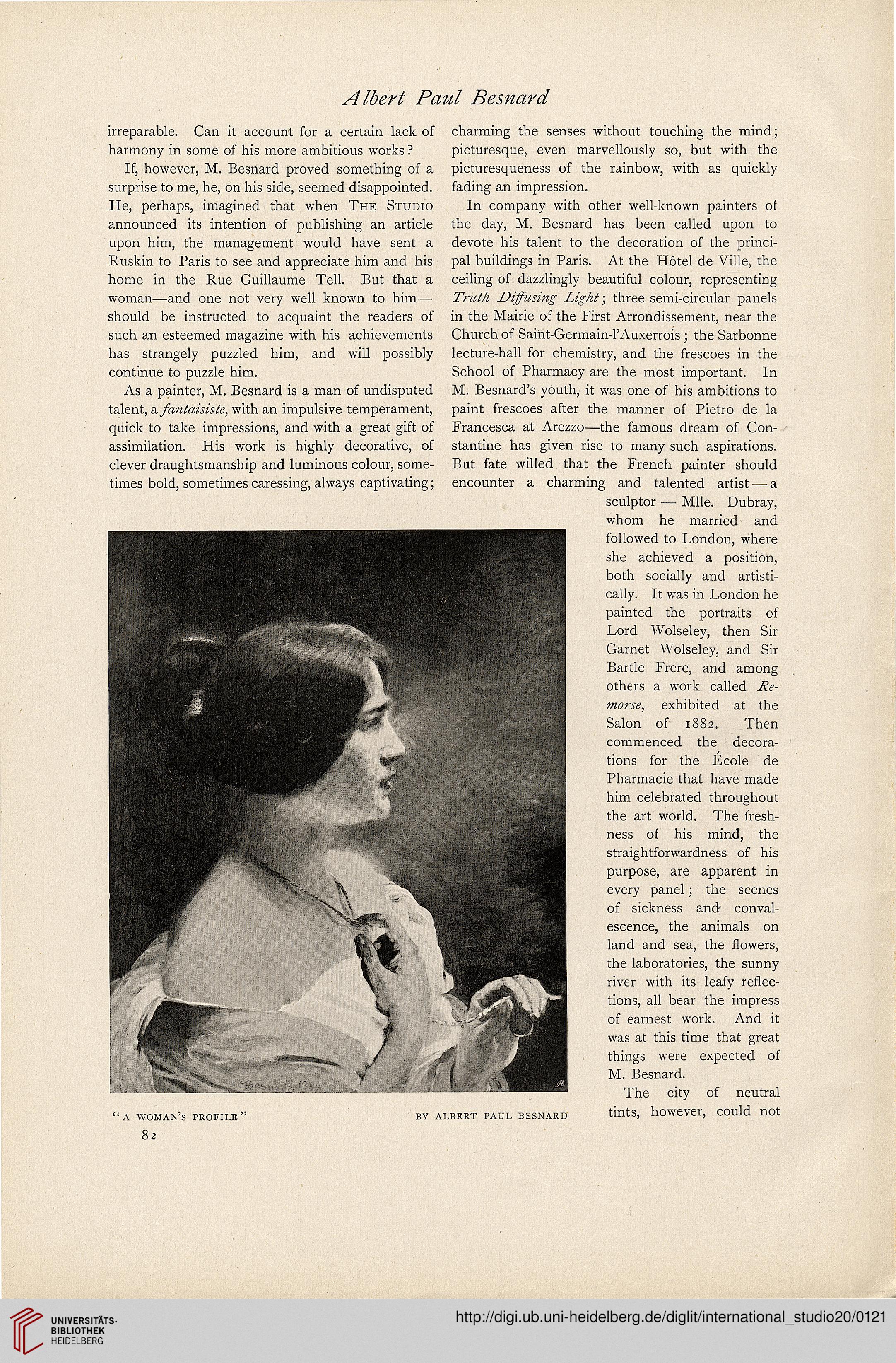irreparable. Can it account for a certain lack of
harmony in some of his more ambitious works ?
If, however, M. Besnard proved something of a
surprise to me, he, on his side, seemed disappointed.
He, perhaps, imagined that when THE STUDIO
announced its intention of publishing an article
upon him, the management would have sent a
Ruskin to Paris to see and appreciate him and his
home in the Rue Guillaume Tell. But that a
woman—and one not very well known to him—
should be instructed to acquaint the readers of
such an esteemed magazine with his achievements
has strangely puzzled him, and will possibly
continue to puzzle him.
As a painter, M. Besnard is a man of undisputed
talent, awith an impulsive temperament,
quick to take impressions, and with a great gift of
assimilation. His work is highly decorative, of
clever draughtsmanship and luminous colour, some-
times bold, sometimes caressing, always captivating;
charming the senses without touching the mind;
picturesque, even marvellously so, but with the
picturesqueness of the rainbow, with as quickly
fading an impression.
In company with other well-known painters of
the day, M. Besnard has been called upon to
devote his talent to the decoration of the princi-
pal buildings in Paris. At the Hotel de Ville, the
ceiling of dazzlingly beautiful colour, representing
AilgAf; three semi-circular panels
in the Mairie of the First Arrondissement, near the
Church of Saint-Germain-l'Auxerrois ; the Sarbonne
lecture-hall for chemistry, and the frescoes in the
School of Pharmacy are the most important. In
M. Besnard's youth, it was one of his ambitions to
paint frescoes after the manner of Pietro de la
Francesca at Arezzo—the famous dream of Con-
stantine has given rise to many such aspirations.
But fate willed that the French painter should
encounter a charming and talented artist — a
sculptor — Mile. Dubray,
whom he married and
followed to London, where
she achieved a position,
both socially and artisti-
cally. It was in London he
painted the portraits of
Lord Wolseley, then Sir
Garnet Wolseley, and Sir
Bartle Frere, and among
others a work called Ag-
Kw/w, exhibited at the
Salon of 1882. Then
commenced the decora-
tions for the Ecole de
Pharmacie that have made
him celebrated throughout
the art world. The fresh-
ness of his mind, the
straightforwardness of his
purpose, are apparent in
every panel; the scenes
of sickness and- conval-
escence, the animals on
land and sea, the flowers,
the laboratories, the sunny
river with its leafy reflec-
tions, all bear the impress
of earnest work. And it
was at this time that great
things were expected of
M. Besnard.
The city of neutral
tints, however, could not
"A WOMAN'S PROFtLE" BY ALBERT PAUL BESNARD




